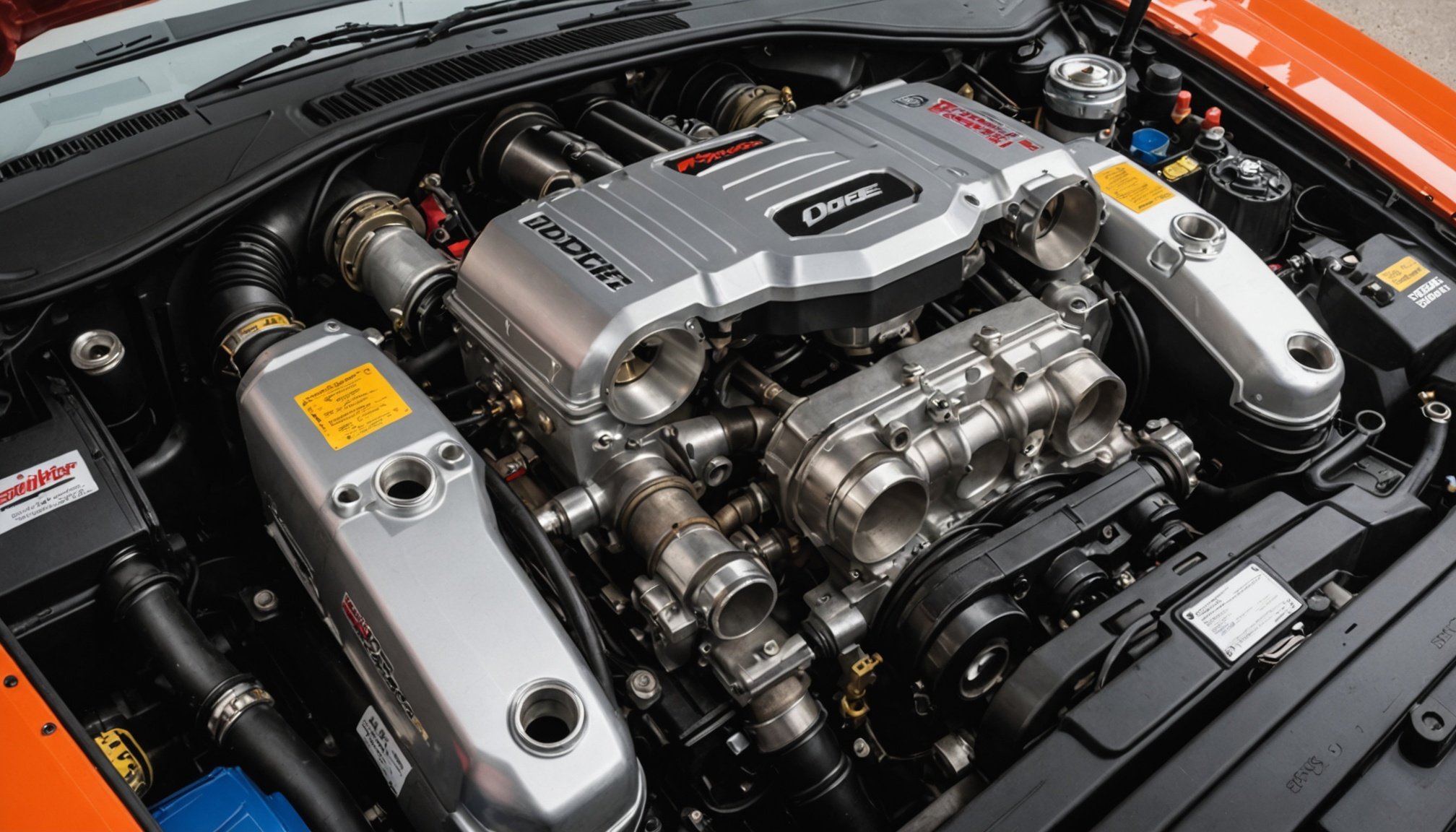Understanding Throttle Body Functionality
In the realm of automotive performance, understanding throttle body mechanics is crucial. The throttle body plays a pivotal role in the air intake system, acting as a gatekeeper that regulates engine airflow. It determines how much air is allowed to enter the engine, directly impacting the vehicle’s power output and fuel efficiency.
Throttle Body Mechanics
The mechanics of a throttle body involve a butterfly valve, which opens and closes to control the air intake based on the driver’s acceleration demand. This process is fundamental to maintaining the correct air-fuel mixture that the engine requires for optimal combustion. With precise regulation of airflow, the engine performs efficiently, providing both power and economy.
Importance for Vehicle Performance
Proper throttle response is essential for any vehicle’s performance. A sluggish response can result in delayed acceleration, compromising the driving experience. Conversely, an efficient throttle response ensures immediate power delivery, enhancing both acceleration and overall performance. The right throttle body modification can vastly improve responsiveness, making it a sought-after upgrade for performance enthusiasts. Adjustments to this component can lead to significant improvements in engine dynamics, setting the stage for a more thrilling and responsive drive.
Benefits of a Larger Throttle Body
Enhancing a vehicle’s performance often involves increasing the airflow to the engine, and a larger throttle body is pivotal in achieving this. By allowing for greater airflow, a larger throttle body can significantly boost an engine’s power and torque output. This increase in airflow helps the engine breathe better, resulting in a more potent combustion process and, ultimately, improved engine performance.
Also read : Revamp Your Ford Fiesta ST: Boost Performance with a Premium Lowering Spring Kit!
A key benefit of a larger throttle body is its substantial throttle response improvement. Improved throttle response translates to quicker and more immediate acceleration, providing a more dynamic driving experience. This modification is particularly beneficial for those seeking a sportier feel or enhanced performance from their vehicle.
Additionally, the modification can have a favourable impact on lower-end torque, making the vehicle more responsive off the line. However, the benefits aren’t limited to just the feel and power of the vehicle; drivers often notice a more linear power delivery, creating a seamless connection between the pedal and engine. These enhancements make a larger throttle body a popular choice among performance enthusiasts aiming to maximise their vehicle’s capability.
Dodge Challenger Specifics on Throttle Body Upgrades
Throttle body upgrades for a Dodge Challenger can significantly enhance vehicle performance and driving enjoyment. Compatibility varies depending on the specific model variant and engine configuration. It’s crucial to select an upgrade that matches your engine for optimal performance gains. Upgrades should be tailored to the engine compatibility of each Challenger variant, ensuring a seamless integration.
Popular Challenger engines, such as the HEMI V8s, are frequently chosen by enthusiasts for such modifications. Throttle body enhancements can lead to noticeable differences in horsepower and torque, improving overall vehicle dynamics. Acknowledging diverse performance metrics is key when assessing the benefits of these upgrades.
Many owners report positive experiences with throttle body modifications, often praising improvements in throttle response and overall engine output. Real-world testimonials highlight the transformative effects that even minor adjustments can bring to the driving experience. When considering modifications, focusing on user experiences can provide valuable insights into the practical benefits and potential challenges encountered. Understanding these specifics allows for more informed decision-making, providing a comprehensive view of how throttle body upgrades can influence Dodge Challenger performance.
Installation Considerations for Throttle Body Upgrades
Upgrading your vehicle’s throttle body can be an exciting modification, but it’s crucial to approach the installation with precision. For those opting for a DIY approach, some essential tools are required. These include a socket set, screwdrivers, and a torque wrench. Ensuring that you have the correct tools helps prevent any mishaps during the installation process.
Tools Required for Installation
A comprehensive set of tools is necessary for successful throttle body installation:
- Socket set: To remove and secure bolts.
- Screwdrivers: For loosening and adjusting screws.
- Torque wrench: To tighten bolts to the manufacturer’s specifications, preventing overtightening.
Step-by-Step Installation Process
Following a structured process is key. Begin by disconnecting the battery to avoid electrical mishaps. Remove the air intake hose from the throttle body and unscrew necessary bolts carefully. Align the new throttle body, ensuring it’s seated properly, and securely fasten with the bolts. Finally, connect the air intake hose and battery.
Common Mistakes to Avoid
Installation can sometimes lead to errors, such as improper torque application, which could impact throttle response. Double-check connections and only proceed if every component is securely fitted. This attention to detail enhances the overall success of the performance modification.
Potential Drawbacks of Throttle Body Upgrades
While upgrading a throttle body can significantly enhance vehicle performance, there are potential performance risks that must be weighed. One concern is the necessary engine tuning that often follows such modifications. An improperly tuned engine may not achieve the full benefits of the upgrade or could even experience decreased efficiency. Adjusting the engine’s parameters is crucial to balance the increased airflow and maintain optimal performance.
Furthermore, alterations can impact vehicle handling and driveability, especially if the power increase is not complemented by other vehicle systems. This might lead to uneven power delivery or traction issues, particularly in vehicles not originally designed for heightened output.
Finally, modifications like throttle body upgrades can affect warranty and insurance. Many manufacturers and insurance companies view them as non-standard parts. Consequently, this could void vehicle warranties or alter insurance coverage. It’s essential to consult with both vehicle manufacturers and insurers before proceeding with any performance modifications to ensure compliance and preserve coverage. Being aware of these potential drawbacks helps enthusiasts make informed and balanced decisions.
Measuring Performance Improvements
Performance Metrics are essential in evaluating the outcome of a throttle body upgrade. Accurate measurements help determine the impact on engine power and efficiency. One effective method is dyno testing, which provides a detailed analysis of your vehicle’s horsepower and torque before and after modifications.
Importance of Dyno Testing
Dyno testing offers precise data, enabling vehicle owners to assess the impact of the throttle body change. By measuring both power output and torque at various RPMs, dyno testing highlights how modifications affect overall vehicle dynamics. This method ensures that improvements are quantified, providing a clear view of performance enhancements.
Comparative Studies
Conducting comparative studies between the original and modified throttle bodies is vital. These comparisons reveal significant differences in throttle response and efficiency, showcasing the practicality of upgrades. Analyzing these differences helps enthusiasts understand the true value of their investment, illustrating tangible benefits like increased engine airflow and improved responsiveness.
An in-depth assessment of performance metrics allows for informed decisions, validating the effectiveness of performance upgrades. Understanding these dynamics ensures enthusiasts achieve their desired outcomes, maximising their vehicle’s potential.



